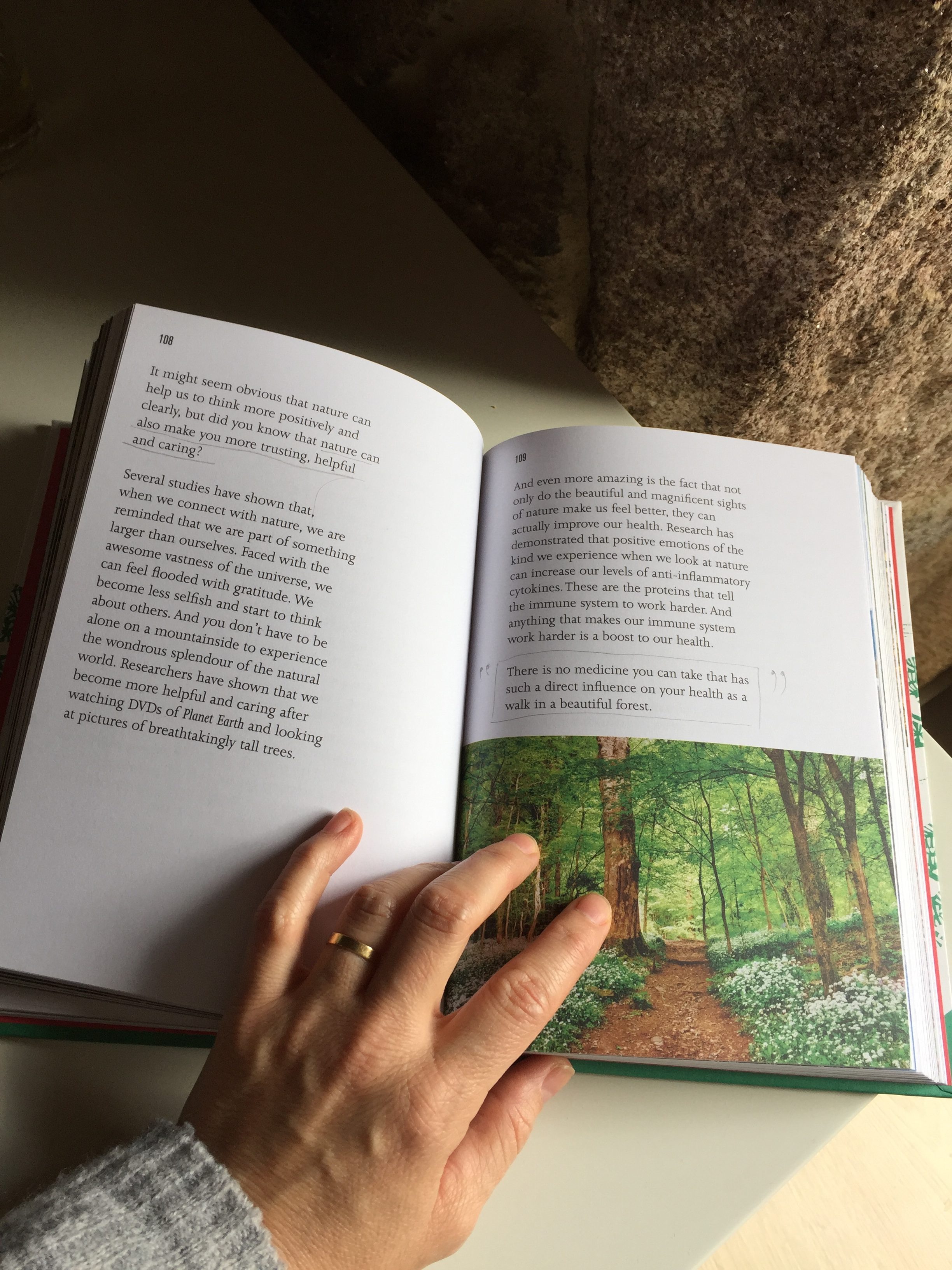It’s time to review a book that you might gladly keep on the bookshelf as a reminder of the important lesson it teaches about the magic of trees - the hardback edition of "Shinrin-yoku. The Art and Science of Forest-Bathing" written by the very man who could be considered the founding father of the movement, Dr Qing Li. He is an Associate Professor at the Nippon Medical School in Tokyo and an expert on forest-bathing and the president of the Society of Forest Medicine in Japan. He took what was a Japanese tradition of spending time in nature, more specifically forest and gardens, as a health practice and turned it into a scientific discipline. And this, we have him to thank for.
The moment the book arrived, it looked like it could take a proud place next to my Meik Wiking’s “Little Book of Hygge”. They are both part of the Penguin Life collection and it shows; it smelled like a nice book should and was a pure pleasure to touch the quality paper pages as I was slowly turning them over. The book is a mixture of rather large font print and many high quality, carefully selected photographs, and a couple of maps, that do not just complement the text but are an essential part of appreciating the book. I don’t see how an audiobook version could give the ‘reader’ the same kind of experience.
One strange thing about the text was its alignment, where it occupies a quasi-column like part of the page, aligned to the left. The key points are then highlighted (repeated from the main text) in a larger, grey font as if they were in a second column. That bothered me at the start, but it’s easy to get used to. There are also inserts every now and then of personal stories of people’s experiences with forest-bathing. They bring a nice touch of showing how the art of forest-bathing applies to the average person.
The book is divided into four sections. The first part explains how the practice of forest-bathing moved from a Japanese cultures’ art of living to a science. This is where hard-to-convince readers might find a good source of scientific facts that prove that forest-bathing is a medicinal practice (there are plenty of references at the end of the book too). The second part explains how to practice shinrin-yoku, giving very practical clues regarding the details of the therapy. Third part explains how we can bring the forest indoors by using essential oils or house plants. And finally, the fourth section talks about the future of the planet, the forests and human health from the point of view of shinrin-yoku. As a bonus, at the end of the book, there is a POMS (Profile of Mood States) test we can take before and after forest-bathing.
There is no medicine you can take that has such a direct influence on your health as a walk in a beautiful forest.

So what is exactly shinrin-yoku and why is it worth our attention?
It is the practice of spending time in the forest for better health, happiness and productivity. The author studied the effects of forest walks on busy managers from Tokyo and it showed that the beneficial health effects can last as long as thirty days and can be felt after only 20 minutes in nature. Forest bathing is thought to not only improve mood and lower stress, but have many other health benefits such as lowering blood pressure, improving blood-sugar levels, improving pain threshold and boosting the immune system (increased NK cells count) and help to lose weight too.
Shinrin-yoku is like a bridge. By opening our sense, it bridges the gap between us and the natural world.

How to properly forest-bathe to reap the most benefits?
The author recommends forest paths that are at least 5km long and should take about 2 hours to thread through. However, even a short walk in a city park is beneficial. Think about walking slowly, leaving all distractions behind and trying to experience the forest with all senses, touching the trees, smelling the flowers, ‘ingesting’ the humid air of a dark forest, and perhaps picking some wild berries, drinking some water from a pure stream or making tea from young pine buds.
Another important aspect is to choose forests with plenty of evergreen conifers, as their essential oils is where part of the benefit resides. Phytoncides, or trees natural oils that function as the trees’ defense mechanism to protect from fungi, bacteria and insects apparently also have a beneficial effect on our immune system when we breath it in. What’s more, using essential oil diffusers at home can have the same effect.
If you want to enhance even more your forest-bathing experience, choose forests paths along rivers, streams, ponds or waterfalls. Water helps to ionize negatively the air and bring our bodies to an electric balance, which has an energizing and refreshing effects and which further translates into higher mental clarity and overall sense of wellbeing. And don’t be afraid of going barefoot to get some grounding and boosting the balancing properties of your forest walk.
The art of forest-bathing is the art of connecting with nature through our senses.
The recipe is pretty straightforward and should be easy to apply even in the busiest of schedules and apparently unfavorable conditions. It’s as easy as leaving the phone and all distractions at home and going for a walk in the nearest park or forest. Maybe try to bring the kids along too. As the author says, “if we let children into the forest, they will become adults who will protect it”. Also, research shows that spending time in nature makes us more trusting, generous and caring, which are usually the values we would certainly want to teach our children too.

In summary, the book is an easy, inspiring and a relaxing read. The only problem is reading it at home and wanting to get out into the forest right that very moment! Every now and then a new term/concept becomes a hype and everyone seems to be tagging their pictures just to show how #hygge their evenings are or how they have mastered #mindfulness. Perhaps #forestbathing and #shinrinyoku should be next things to adopt and put into practice. I know I am jumping on that bandwagon with both feet.
Sources and picture credits:
Li, Qing (2018) Shinrin-yoku. The Art and Science of Forest-Bathing, London: Penguin Random House.
Images:
- Weronika Gasior
- Weronika Gasior
- andrew-charney/ Unsplash
- jake-melara/ Unsplash
- jordan-whitt/ Unsplash


